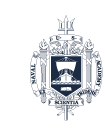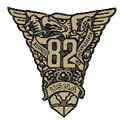USS Lassen (DDG-82) – How it earned it name
Posted: 11/23/2025
Gregg Elmendorf (14) shared this gouge on how our Class’ namesake ship, DDG-82, earned its name (from a post by CDR Salamander):
…he’s just 26…
CDR Salamander
Jun 20

You’re a prior-enlisted, former NAVCAD and 26-year-old LTJG pilot of the small but spunky SH-2 Seasprite on the USS Preble (DLG 15), you’re assigned to Search and Rescue duty off the coast of Vietnam..
What does anyone expect from you as the wider war rages ashore? You’re not TACAIR. Heck, they make you deploy with SWOs.
On paper, you’re considered just a little above a liberty risk.
Search and Rescue (SAR)? Sure, that is a Navy helo crew’s bread and butter. Picking aircrew out of the drink. Now, Combat SAR (CSAR)? Well, I guess if you have enough door gunners and attitude, anyone can do CSAR.
If not you, then who? If not now, when?
Often in war, it isn’t what you are trained for, what you are equipped for, or what mission you are on. It is the fact you are there, no one else is, and a mission must be done.
There is no such thing as an ordinary day when deployed.
Character is not built, it is revealed.
From the Naval History and Heritage Command write-up from November 3, 2015,
On 18 June 1968, Lt. Cmdr. John W. Holtzclaw, with Lt. Cmdr. John A. Burns as his Radar Intercept Officer (RIO) , of Fighter Squadron (VF) 33, launched in a McDonnell Douglas F-4J Phantom II (BuNo. 155546), Rootbeer 210, in company with their wingman, Rootbeer 214, from attack aircraft carrier America (CVA-66) to escort Buckeye 504, a Grumman A-6A Intruder flying from America, for an armed reconnaissance over North Vietnamese lines of communication north, northwest, and west of Vinh, North Vietnam. It was a high overcast and moonless night.
Shortly after midnight the jets reached a position 12 nautical miles east of Vinh Son when Rootbeer 210 received electronic indications of surface-to-air missiles (SAMs) and the crew observed three missiles lift off. The launches did not trigger warning tones, but Buckeye 504 began to jam and dumped chaff while the Phantom IIs jettisoned their bombs. Holtzclaw avoided the first two missiles through deft maneuvering and the second weapon detonated off the jet’s port quarter.
The third missile homed in from the Phantom II’s 9 o’clock position below and exploded beneath at about 0010 on 19 June. Observers saw the jet erupt in a “blinding white fire ball.” The initial reports placed the stricken Phantom II about twenty miles inland and a half mile south of the 19th parallel.
The men ejected and activated emergency beepers as they descended in their parachutes, landing in adjacent rice paddies about three miles from the crash site. The stranded naval aviators crossed paddies toward a wooded karst hill in about 45 minutes, a feat that investigators afterward summarized as “extremely hazardous…[in]…almost total darkness.”
Holtzclaw and Burns reached dense jungle and radioed their rescuers. Meanwhile, Lt. Cmdr. George H. Crater of Attack Squadron (VA) 56 launched in a Douglas A-4E Skyhawk from attack aircraft carrier Enterprise (CVAN-65) and acted as on-scene commander, his shipmate Lt. Gary H. Tobey coordinating.
Lt. (j.g.) Lassen, his copilot Lt. j.g. Clarence L. Cook, and AE2 Bruce B. Dallas and ADJ3 Donald West, on board as aircrewmen, launched in Clementine 02, a Kaman UH-2A Seasprite (BuNo. 149764), from South SAR Destroyer (guided missile frigate) Preble (DLG-15) at 0022. Preble “handed off” the rescuers to Jouett (DLG-29), and Lassen and his crew spotted flames from the Phantom II’s wreckage.
The dense foliage prevented them from locating a suitable clearing, and Lassen asked Holtzclaw and Burns to signal. The downed aviators heard the helo’s rotors and illuminated a high-intensity strobe light, but Clementine 02 only spotted occasional glimpses of the strobe until other aircraft dropped Mk 24 paraflares. Holtzclaw fired five .38 cal. magnesium high-intensity tracers that enabled the Seasprite crew to briefly spot the men. Despite diminishing fuel Lassen unsuccessfully attempted to break through the jungle and traverse the steep hill, but landed in an open rice paddy two hundred yards below the men’s position.
Enemy small arms and automatic weapons fire ripped skyward. “Come get us, come get us!” Holtzclaw and Burns repeatedly cried over the radio. The flares faded and returned the night to pitch darkness. The helo attempted to close but the aircrewmen shouted they were about to hit a tree. Lassen added power and climbed but experienced a large jolt as the helo slammed into a tree just aft of Dallas’ position. The Seasprite pitched down into a tight starboard turn, but the pilot regained control despite heavy vibration in the controls. Cook fired from his window while aircraft dropped additional flares and the Seasprite identified the downed men’s position. A “ball of flame” suddenly passed underneath the helo with a high speed whoosh from a rocket-propelled grenade (RPG).
Holtzclaw and Burns broke cover and moved downhill, followed by the sounds of a North Vietnamese search party noisily crashing through the brush above. The fugitives separated and evaded their pursuers down the remaining hundred yards of the hillside, and Burns signaled the helo by strobe light and his radio. Clementine 02 turned on its landing light and hovered about 100 feet away from the men, who stumbled and fell in the deep grass as they raced for the helo but scrambled on board at 0225.
The helo escaped at 140 knots and ascended to 4,000 feet to begin the 15-mile return flight back to Jouett. Additional flak and heavy caliber automatic fire from coastal defense sites en route compelled Lassen to descend to avoid the rounds. The crewmen proved unable to close the starboard door and it was torn from the helo, but Clementine 02 returned at 0240 with 135 pounds of fuel remaining — barely enough for five minutes. Holtzclaw sustained minor cuts and scratches, while Burns received injuries to his right knee and back during ejection, and sprained his left ankle during the evasion phase. Lassen received the Medal of Honor and was entitled to wear the Presidential Unit Citation.
Cmdr. Lassen retired from the Navy in 1982 and lived in Pensacola, Florida, until his death from cancer on 1 April 1994. He is buried at Barrancas National Cemetery at Pensacola.
Lassen was only 52 when he passed away.
Attention to Citation:

For conspicuous gallantry and intrepidity at the risk of his life above and beyond the call of duty as pilot and aircraft commander of a search and rescue helicopter, attached to Helicopter Support Squadron 7, during operations against enemy forces in North Vietnam. Launched shortly after midnight to attempt the rescue of 2 downed aviators, Lt. (then Lt. (J.G.)) Lassen skillfully piloted his aircraft over unknown and hostile terrain to a steep, tree-covered hill on which the survivors had been located. Although enemy fire was being directed at the helicopter, he initially landed in a clear area near the base of the hill, but, due to the dense undergrowth, the survivors could not reach the helicopter. With the aid of flare illumination, Lt. Lassen successfully accomplished a hover between 2 trees at the survivors’ position. Illumination was abruptly lost as the last of the flares were expended, and the helicopter collided with a tree, commencing a sharp descent. Expertly righting his aircraft and maneuvering clear, Lt. Lassen remained in the area, determined to make another rescue attempt, and encouraged the downed aviators while awaiting resumption of flare illumination. After another unsuccessful, illuminated rescue attempt, and with his fuel dangerously low and his aircraft significantly damaged, he launched again and commenced another approach in the face of the continuing enemy opposition. When flare illumination was again lost, Lt. Lassen, fully aware of the dangers in clearly revealing his position to the enemy, turned on his landing lights and completed the landing. On this attempt, the survivors were able to make their way to the helicopter. En route to the coast he encountered and successfully evaded additional hostile antiaircraft fire and, with fuel for only 5 minutes of flight remaining, landed safely aboard USS Jouett (DLG-29).
Lassen, on the left, with his Det.
 |
So, next time you read about the exploits of the Arleigh Burke destroyer USS Lassen (DDG 82), you now know she’s named after a baller.
« Misc. Reunion Gouge
Recent Posts
- Resizing Gouge for Balfour Class Rings December 5, 2025
- USS Lassen (DDG-82) – How it earned it name November 23, 2025
- Misc. Reunion Gouge October 26, 2022
- 40th Reunion – Update #13 – Final Final Gouge! October 25, 2022
- 40th Reunion – Update #12 – Final Gouge! October 24, 2022



